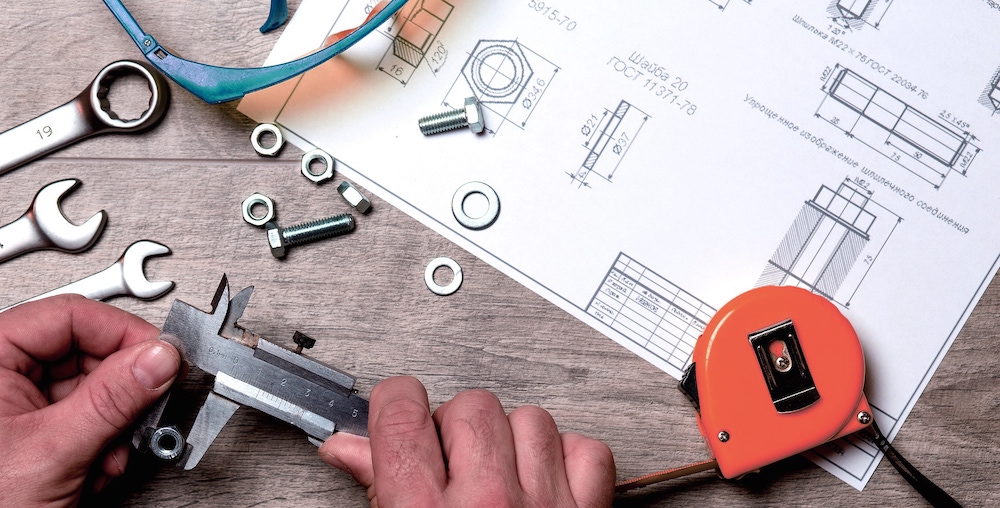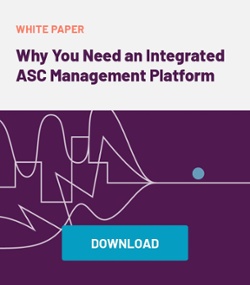
- Patient Safety, ASC Operations, ASC Safety
- BY: DeeDee Dalke, CPC, CPPM, LMT, NCBTMB
- Nov 1, 2019
The first World Patient Safety Day, on Sept. 17 of this year, draws attention to the 134 million adverse events that occur in healthcare settings across the globe. ASCs are understandably proud of their low rates of adverse events, but know there’s always room for improvement. Patient safety initiatives often focus on the surgical and clinical issues before, during and after surgery, yet it’s just as important to look at how an ASC’s physical infrastructure can impact patient safety.
Here’s what you need to know to keep your facilities in top shape, and how they contribute to maintaining a culture of safety in your ASC.
1. Let Appendix L. Lead You
To get started with facilities management, new ASC administrators begin with the State Operations Manual, or Appendix L of the Centers for Medicare and Medicaid Services guide to the ASC survey. Sec. 416.44 of the Conditions for Coverage are specific to the “Environment” of an ASC, specifically that the ASC must have a “safe and sanitary environment, properly constructed, equipped, and maintained to protect the health and safety of patients.” This includes operating room and procedure room design and equipment. It also governs facility equipment (lighting, generators or other back-up power) as well as medical equipment. There’s also testing for temperature, humidity and airflow in every room, supported by the appropriate documentation to show they’ve maintained acceptable standards of each. The same holds true for sterilization standards for equipment/instruments.
The provision for separate recovery room and waiting areas, and controlling access to OR and recovery areas is also reviewed in Appendix L. Fire safety, emergency power, and emergency equipment, and appropriately trained emergency personnel (CPR, tracheostomy) are the final areas touched by the CMS standards for facilities management.
2. But Don’t Stop with Appendix L
While Appendix L is foundational for directing facilities management efforts, ASC administrators shouldn’t stop there. Some key areas that transcend the Appendix L minimum are:
- Water systems — while HVAC issues clearly impact ASC safety and infection control, water management is just as pivotal. Just as water can be your home’s worst enemy, ASCs should closely monitor cooling towers, ice machines and the entire water distribution system in their facility for problems. For example, evidence of water damage that isn’t repaired quickly can lead to mold.
- Remodeling — with more procedures approved in outpatient settings, many ASCs are expanding their facilities. Whether it’s an addition or remodeling, facility professionals should work closely with ASC administration to make sure construction work won’t impede patient safety and comfort.
- Adequate space — CMS requires waiting and recovery rooms to be separate and distinct spaces, for infection control and patient confidentiality reasons. But beyond that requirement, it’s important that everyone has enough space to maneuverand do their job, as it has implications for infection control, falls and other risks.
- Maximum number of trash and soiled linen containers — An overflowing trash bin or soiled linen container doesn’t do much to communicate confidence about safety and sanitation. But it’s also an often overlooked fire hazard. Make sure there’s enough containers in a single room (but still with adequate space to move around).
3. Build Your Own Facilities Management Safety Checklist
 While no longer required to maintain safe surgery checklists by CMS, the Ambulatory Surgery Center Association recommends facilities continue using checklists, to assure the ASC is implementing safe surgery practices for each of the three critical perioperative periods.
While no longer required to maintain safe surgery checklists by CMS, the Ambulatory Surgery Center Association recommends facilities continue using checklists, to assure the ASC is implementing safe surgery practices for each of the three critical perioperative periods.
Like clinical safety, building safety requirements need their own checklists. You can develop your own, or ASCA members can hop on the discussion board to see how other ASCs have done it. One ASC uses a “Facilities Life Safety Documentation” checklist, with every aspect of their physical infrastructure identified for inspection and maintenance at appropriate time intervals.
Regardless of how you structure your ASC report to track maintenance and other facilities-related issues, refer to them frequently and stick to your schedule. A water leak or broken AC compressor can shut down a center for the day. Needless to say, nobody has time for that.
4. Abandon the Inpatient Mentality
Those new to ASCs are cautioned by industry veterans to think more broadly about their facilities management responsibilities. As one ASC administrator quips, “You can’t manage an ASC with an inpatient mentality.” For example, because ASCs can’t keep patients for more than 24 hours, they are subject to both healthcare andbusiness occupancy requirements from the National Fire Protection Association’s Life Safety Code requirements. Consequently, if they are housed in an office building or other commercial structure vs. a freestanding building, they are responsible for their center’s emergency exit pathways through the common corridors and enclosures nearest their center.
Disaster preparedness plans that take an all-hazards approach are also more detailed in an ASC. As defined in Appendix L, disaster preparedness plans must take into account hazard identification and mitigation, preparedness, response, recovery, plan coordination and plan testing.
5. Embrace Technology to Make Facilities Management Easier
 The forerunner of Vanderbilt University Medical School was located in an 1890s-era
The forerunner of Vanderbilt University Medical School was located in an 1890s-era
building with an enormous operating “theater” crowded with germ-laden medical students and others watching often gloveless surgeons (gloves were not widely adopted for surgical use until a decade later) do their work. The space is still there, but thankfully the germ theory of disease has long since put an end to its use as an operating “theater.”
Today’s ASC operating roomsand recovery areas have restricted access — one of many non-clinical regulations that help ASCs uphold their highest responsibility and greatest priority: to keep patients safe. Having an integrated practice management and EHR platform in place dramatically improves your ability to perform the quality reporting you need to ensure your center is running at optimal levels of safety for patients and staff.
Take anesthesia quality reporting. If your ASC hits their quality reporting targets for normothermia in the Post-Anesthesia Care Unit, that’s great. But faster throughput may lead to unintended downstream effects, like a crowded patient pick-up area. Quality data can help surface these issues before they become a problem.
Another example is incident reporting. The Simplify ASC platform provides the insight you need to uncover the facilities-driven factors involved. Custom quality modules allow you to create and publish reports for any field. Additional custom modules are available for facility-specific data abstraction and reporting. Let us help you uncover hidden facilities management opportunities for improved patient safety and ROI.
Ready to step up your patient safety efforts?

